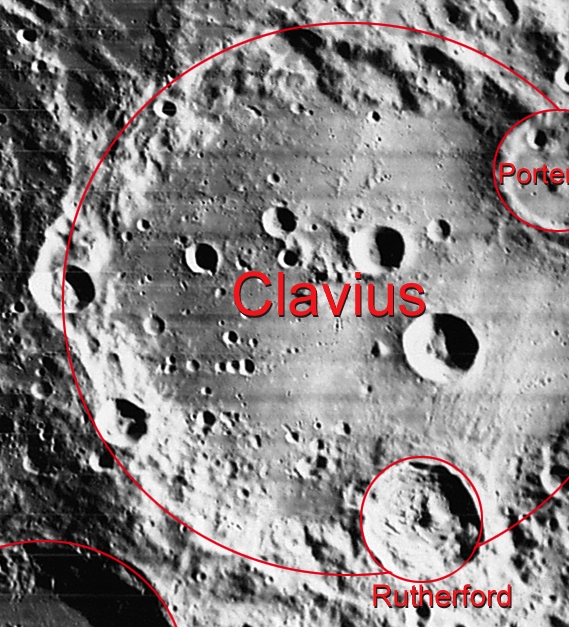Tunguska in "National Geographic" (October 2010)

Clavius crater on the Moon
Clavius - one of the largest impact crater on the Moon, can be detected with the unaided eye: Coordinates - 58.4°S 14.4°W, Diameter - 225 km, Depth - 3.5 km.
This large crater was formed about 4 billion years ago. (Wikipedia)
Within the southern rim of Clavius the Rutherfurd impact crater can be seen (Diameter - 48 × 54 km, Depth - 2.9 km). Rutherfurd forms the larger member in an arcing chain of impact craters of decreasing size that curves across the floor of Clavius in a counterclockwise direction. The craters in this "chain" are of different age. The fact that Clavius floor was hit in different time by other cosmic bodies is not strange: the impacts are not correlated one with the other, so that the formation of the oldest crater does not influence the probability of subsequent impacts in the same place.
Similarly the presence of the Kulikovsky Triassic volcano in the region of the 1908 Tunguska impact cannot influence the probability of a new (non correlated) impact of a cosmic body in the same region. The probability of a new impact on a 2000 square kilometers surface in Tunguska is equal to the probability of such an impact on a 2000 square kilometers surface in the Cornell University surroundings.
Unfortunately, these considerations
are not always used for the Tunguska Event.
The field researches carried in July 2009 by the Bologna group and the group of the Cornell University are reported in
 Back to the videos file
Back to the videos file

 Back to the Photo Gallery
Back to the Photo Gallery


 Back to the Tunguska Home Page
Back to the Tunguska Home Page
